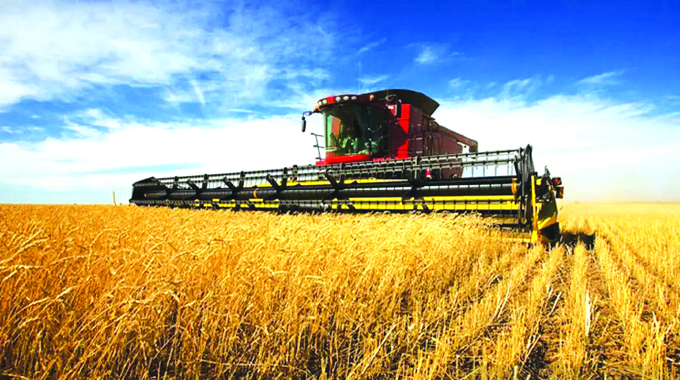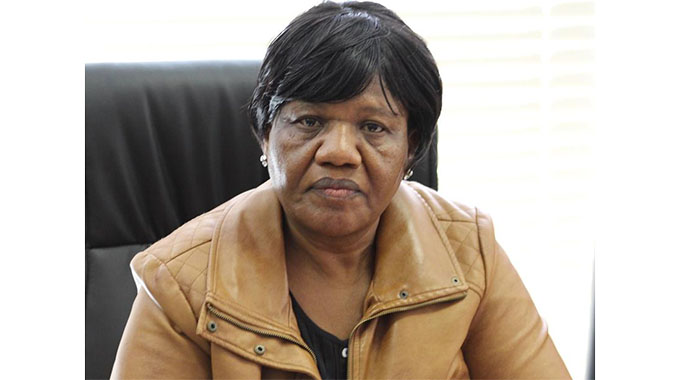US$20m facility to grow Zim’s wheat output

Oliver Kazunga Senior Business Reporter
ZIMBABWE’S wheat output from 18 rural irrigation schemes the Government targets to revive is expected to rise by an additional 15 000 tonnes following the launch of the US$20 million Smallholder Irrigation Development Fund (SIIDF).
Finance and Economic Development Minister Professor Mthuli Ncube and Lands, Agriculture, Fisheries, Water and Rural Development Minister Dr Anxious Masuka launched the facility at the Treasury offices in Harare yesterday.
The SIIDF, which is aimed at revitalising 18 rural irrigation schemes countrywide, comes at a time Zimbabwe expects a bumper winter wheat harvest, which for the first time makes the country self-sufficient.
Zimbabwe expects a record winter wheat harvest of more than 380 000 tonnes this year against a national annual requirement of 360 000 tonnes.
The SIIDF is being funded from Zimbabwe’s US$958 million Special Drawing Rights (SDRs) received from the International Monetary Fund following the disbursement of US$650 billion to cushion the multilateral lender’s member countries from the impact of Covid-19.
The Government said US$145 million from the SDRs will be drawn down by the Government to support critical areas this year with social services and the productive sectors poised to get the bulk of the money.
Last month, the Government launched a US$30 million Horticulture Export Revolving Fund (HERF), also funded from the SDRs, to revive the key export sector.
Responding to questions from the media, Dr Masuka said the launch of the SIIDF marked yet another milestone in the development of the country’s agriculture sector.
He said the envisaged bumper wheat harvest was something Zimbabwe has achieved in the midst of numerous challenges among them illegal western sanctions.
“Thus, we are the only African country that will achieve national wheat self-sufficiency; we have the potential to do more, ride on this, the winter wheat success can be able to do more for summer.
“My expectation, therefore, is that this is just under 3 000 hectares at five tonnes per hectare, it means another 15 000 tonnes.
“It means next year we will probably be at 415 000 tonnes of wheat arising out of this additional hectrage,” said Dr Masuka, adding that the above intervention complements existing programmes.
“We have for example, the smallholder irrigation development project which is targeting 6 100ha of rehabilitating existing irrigation schemes and it’s funded by IFAD (International Fund for Agricultural Development), the Government … the Government itself from its own resources has a budget for 92 irrigation schemes this year,” he said.
“There are 400 smallholder irrigation schemes in the country on 26 000ha.
“Only if we could achieve five tonnes per hectare for wheat on these, and perhaps a conservative 7/8 tonnes per ha for maize, then it means the strategic grain reserve requirement revised upwards of 1,5 million tonnes, we will be able to achieve that perhaps in the next three seasons.”
Dr Masuka said the thrust the Government has taken on transforming the agriculture sector does not only ensure households are climate proofed for sustainable livelihoods, but they begin to participate in economic activity.
“This is the excitement that is generated by these SDRs and complementary role of these to the other existing facilities.
“Under ARDA as you know that these are business cases, there are budgets, cash flows and there is farming as a business and markets.
“What we see in Mbare (agriculture market) is consequences of unstructured agriculture, which is why we have reformed all our parastatals- AMA to move away from the levy collector to become the regulator for development and to look for markets.
Prof Ncube said, as outlined in the National Development Strategy 1 (2021-2025), Government was committed to ensuring that there is food and nutrition security through improved food self-sufficiency and retaining the regional breadbasket status.
He said the Government was also committed to increasing food self-sufficiency from the 2020 level of 45 percent to over 100 percent while also reducing food insecurity from the high of 59 percent recorded in 2020 to less than 10 percent by 2025.
Prof Ncube said the US$20 SIIDF will be disbursed through the national budget starting in January next year to the identified 18 smallholder irrigation schemes spread in the 8 rural provinces of Zimbabwe excluding Harare and Bulawayo metropolitan provinces.
“The main objective of the facility is to ensure food and nutrition self-sufficiency to the vulnerable smallholder rural farmers in Zimbabwe.
“A total of 18 smallholder irrigation schemes covering about 2714 hectares, with about 4 500 households will benefit from the facility. It is from these resources that the Treasury is targeting the vulnerable rural smallholder farmers to finance the development of the irrigation infrastructure,” he said.











Comments